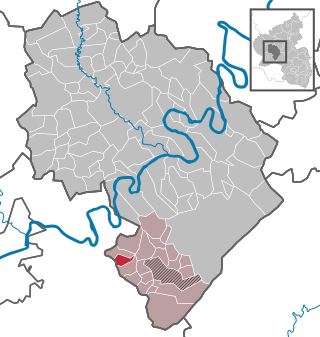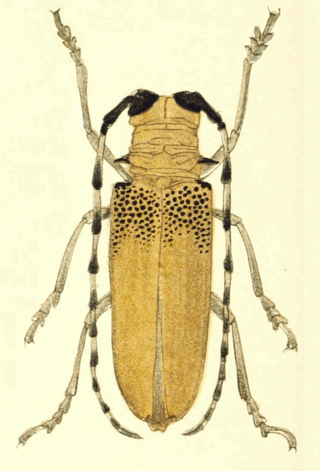The relativistic Breit–Wigner distribution is a continuous probability distribution with the following probability density function,

Gregory Breit was a Russian-born Jewish American physicist and professor at New York University (1929–1934), University of Wisconsin–Madison (1934–1947), Yale University (1947–1968), and University at Buffalo (1968–1973). In 1921, he was Paul Ehrenfest's assistant in Leiden University.
The Breit equation is a relativistic wave equation derived by Gregory Breit in 1929 based on the Dirac equation, which formally describes two or more massive spin-1/2 particles interacting electromagnetically to the first order in perturbation theory. It accounts for magnetic interactions and retardation effects to the order of 1/c2. When other quantum electrodynamic effects are negligible, this equation has been shown to give results in good agreement with experiment. It was originally derived from the Darwin Lagrangian but later vindicated by the Wheeler–Feynman absorber theory and eventually quantum electrodynamics.

Harry Manx is a Canadian musician who blends blues, folk music, and Hindustani classical music. His official website describes his music as being a "blend Indian folk melodies with slide guitar blues, add a sprinkle of gospel and some compelling grooves and you'll get Manx's unique "mysticssippi" flavour." Manx plays the slide guitar, harmonica, six-string banjo, mohan veena and Ellis stomp box. He studied for five years in India with Vishwa Mohan Bhatt. Bhatt is the inventor of the 20-stringed mohan veena, which has become Manx's signature instrument. He has released twelve albums in twelve years, and has his own record label Dog My Cats Records. He has received much recognition and many awards, including: seven Maple Blues Awards, six Juno nominations, the Canadian Folk Music Award in 2005 for Best Solo Artist, and CBC Radio’s "Great Canadian Blues Award" in 2007.

Breit is an Ortsgemeinde – a municipality belonging to a Verbandsgemeinde, a kind of collective municipality – in the Bernkastel-Wittlich district in Rhineland-Palatinate, Germany.

Notiophilus is a genus of ground beetle native to the Palearctic, the Nearctic, the Near East and North Africa. Most known for their distictive head shape and size-body ratio the genus is sometimes referred to as the springtail stalkers.

Cymindis is a genus of ground beetle native to the Palearctic, the Near East, and North Africa. It contains the following species:
Harvey Breit was an American poet, editor, and playwright as well as reviewer for The New York Times Book Review from 1943 to 1957.

"PerfektBreitHimmelblau" are three songs and a triple A-side-single by the German rock band Die Ärzte. The songs are tracks 8, 3 and 1 of their 2007 album Jazz ist anders.

Kevin Breit is a Canadian musician from Northern Canada. Breit has collaborated in numerous bands, and recorded solo albums on his own Poverty Playlist label, and Stony Plain Records. He is also well known for session work on numerous Grammy award winning albums by a wide range of artists including Cassandra Wilson and Norah Jones.
Breit–Wigner distribution may refer to:
Schriftguss AG was a type foundry in Germany founded in 1892 under the name Brüder Butter by purchasing the type casting firm of Otto Ludwig Bechert that had been founded in 1889. It was later incorporated in 1922 as Schriftguss A.-G. vorm. [prev.] Brüder Butter. Their types were known for “vigour, liveliness and freshness.” Though some faces were done in house, the foundry mainly worked with outside “Schriftkünstler”, more than was typical at the time. A unique product of the foundry were modular systems of “Plakattype” to compose shapes and letterforms for display and jobbing applications, for instance Dekora, or Albert Auspurg’s 1931 Ne-Po (negative–positive), and finally Super-Plakattype in 1949. After the Nazi seizure of power in 1933 the last of the Butter brothers resigned from the corporation and it was changed to a limited partnership. In 1948 the company was expropriated by the post-war communist government and became public property, under the name VEB Schriftguss Dresden, eventually becoming merged into VEB Typoart – Drucktypen, Matrizen, Messinglinien in 1951. As a state run enterprise, the foundry lost its verve and panache and settled into producing serviceable type without distinction.
Cymindis elegans is a ground beetle species in the genus Cymindis, in the subfamily Lebiinae and tribe Lebiini. It is found in Virginia in the United States.

Apriona is a genus of longhorn beetles in the subfamily Lamiinae.
Cymindis ephippium is a species of ground beetle in the subfamily Harpalinae. It was described by Escalera in 1914.

The Breit–Wheeler process or Breit–Wheeler pair production is a proposed physical process in which a positron–electron pair is created from the collision of two photons. It is the simplest mechanism by which pure light can be potentially transformed into matter. The process can take the form γ γ′ → e+ e− where γ and γ′ are two light quanta.
Apriona vagemaculata is a species of beetle in the family Cerambycidae. It was described by Breuning in 1948. It is known from Malaysia and Sumatra.
In particle physics, the Breit frame is a frame of reference used to describe scattering experiments of the form , that is experiments in which particle A scatters off particle B, possibly producing particles in the process. The frame is defined so that the particle A has its momentum reversed in the scattering process.

Ernst Breit was a German trade union leader.
Barbara Nicolette Breit was an American tennis player of the 1950s.









